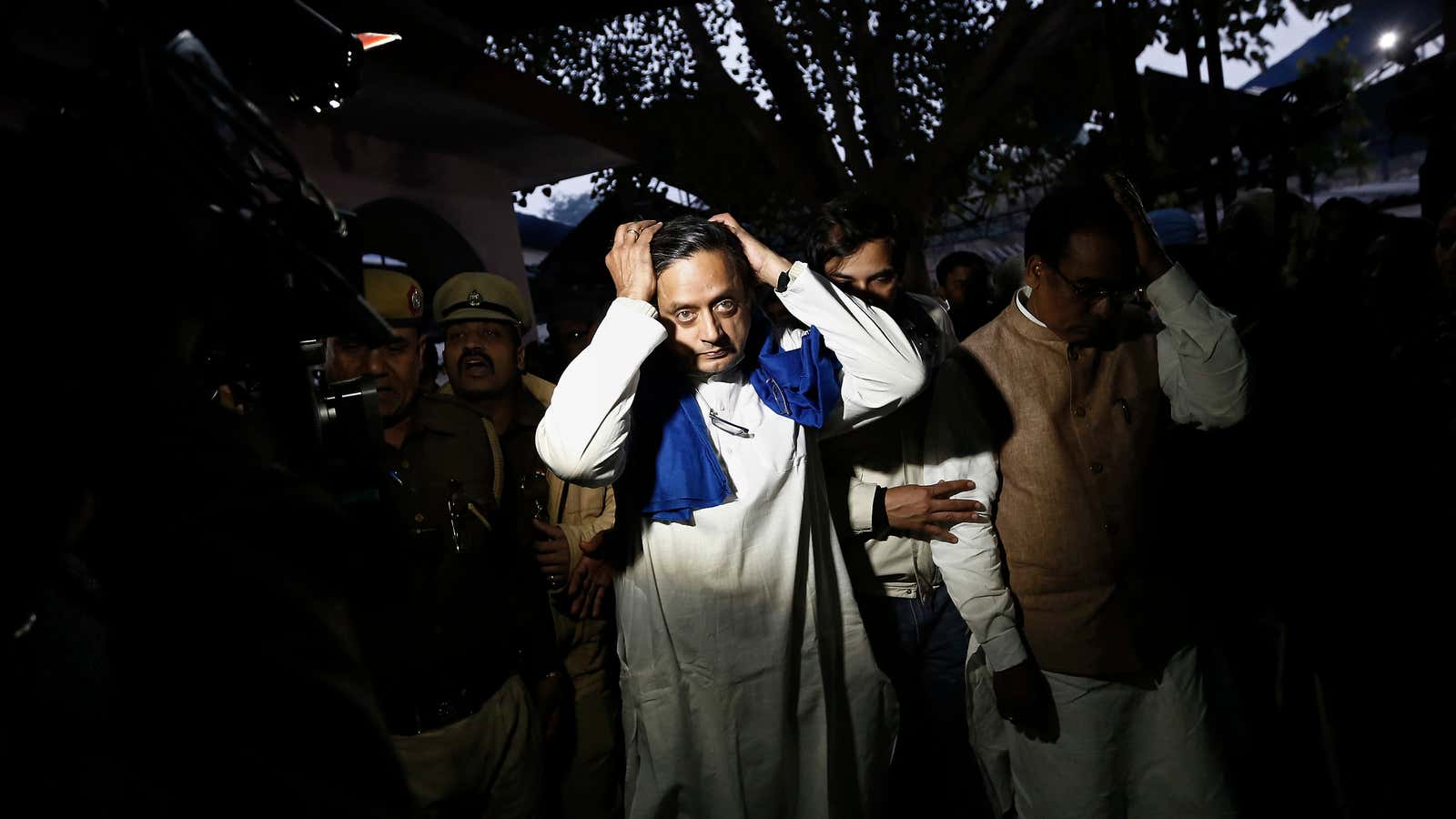One of the most keenly-watched contests in India’s general election was in Thiruvananthapuram, the capital city of the southern state of Kerala.
The incumbent member of parliament, Shashi Tharoor of the Indian National Congress (INC), won by a margin he himself did not anticipate. The former United Nations under-secretary general has been representing this high-profile constituency since 2009. In 2014, he won by a narrow margin of 15,000-odd votes against O Rajagopal, a veteran of Hindu nationalist Bharatiya Janata Party (BJP). This time, he was locked in a tight contest against Kummanam Rajasekharan of the saffron outfit, which ultimately even saw its vote share dip by 1%, after having secured a third of it in 2014.
This election was also significant as Kerala had always kept the BJP at bay despite the BJP holding considerable sway in the rest of the country and even in many parts of Thiruvananthapuram. This round was seen as its best chance to buck that trend.
In the end, Tharoor replicated his 2009 win with a nearly 100,000-vote victory margin, backed by new voters and the consolidation of minorities in a three-way contest against Rajasekharan and the Communist Party of India’s (CPI) C Divakaran.
Unlike 2014, when the BJP candidate fought on the plank of development, it tried to harness the Sabarimala controversy to cross the hurdle in 2019. Last year, the Indian supreme court had ruled in favour of the entry of women of menstruating age into the temple against the traditional norm. The BJP was at the vanguard of resisting this change in the months following the verdict. However, Thiruvananthapuram clearly preferred Tharoor’s more progressive agenda.
Remarkably, he also defied the predictions of opinion polls and exit polls, significantly rising in political stature. The 63-year-old is now in contention to become the leader of his party in the Lok Sabha, the lower house of Indian parliament.
What worked?
Tharoor is among the most popular political leaders in India’s social media landscape with followers cutting across ideological divides. He was the most followed Indian politician on Twitter for the longest time till Narendra Modi stepped in. He has authored over 15 books, with his latest, Why I am a Hindu, almost reading like a treatise against the BJP’s Hindutva ideology.
His sophisticated English is often a topic of conversation, and often sparks controversy. Even during the latest election campaign, his usage of the word “squeamish” was misrepresented by his opponents.
There are many factors that enabled Tharoor’s stellar win. The most significant being the consolidation of minorities in favour of Tharoor as the contest became a straight fight with Rajasekharan towards the end.
Tharoor’s massive popularity among youth and women is one of the factors that favoured him. In 2014, the death of his wife Sunanda Pushkar was used by his political opponents to vilify him, hurting his prospects. Even this time around, there was no dearth of smear campaigns by proxies of both his opponents. Even Tharoor’s 1989 book, The Great Indian Novel, became an issue this time around.
Tharoor’s diplomatic stand on the Sabarimala issue is also supposed to have helped him pull through. A self-professed liberal, he claimed to be conflicted on account of the sentiments of the people he represented.
The BJP, on its part, threw the kitchen sink at him. A fortnight before polling, Tharoor was seen lagging, with his party machinery seemingly not fully behind him. However, he managed to overcome that with an all-out effort in the last couple of weeks with many of his party leaders backing him at the last minute.
Moreover, Rajasekharan doesn’t enjoy a moderate image like Tharoor’s 2014 opponent Rajagopal.
The CPI candidate’s vote share too dipped by 3% even as Tharoor’s own went up by 7%. A lot of fence-sitters and swing voters, too, seem to have favoured him, going by the numbers.
It remains to be seen if this impressive win propels Tharoor to a leadership position in his party, though.
We welcome your comments at [email protected].
